Ohio Students Try to Drive VBB-3 Electric Car to 643.75 km / h
Ohio State University students have worked with Venturi electric car manufacturers to create the fastest electric car in the world. They accelerated The Venturi Buckeye Bullet-3 (VBB-3) on Bonneville Salt Lake to 482 kilometers per hour in 2015, and plan to set a record at 643.75 km / h in 2016. They
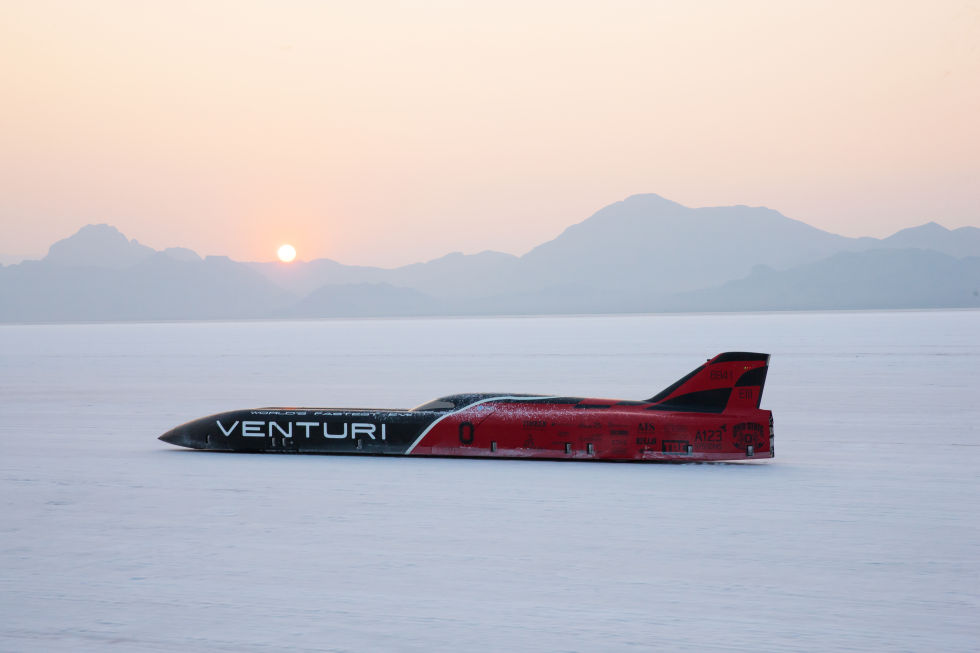
equipped the Venturi Buckeye Bullet-3 with two electric motors each with a capacity of 1,500 horsepower (1,119 kW). Motors get energy from eight large lithium-ion batteries that were previously installed on the Dallara IR03 IndyCar.
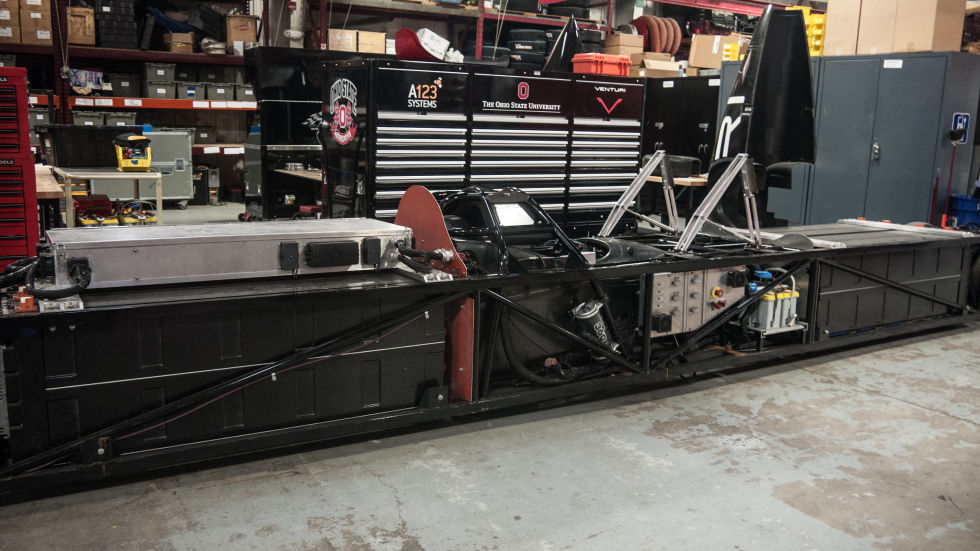
An electric
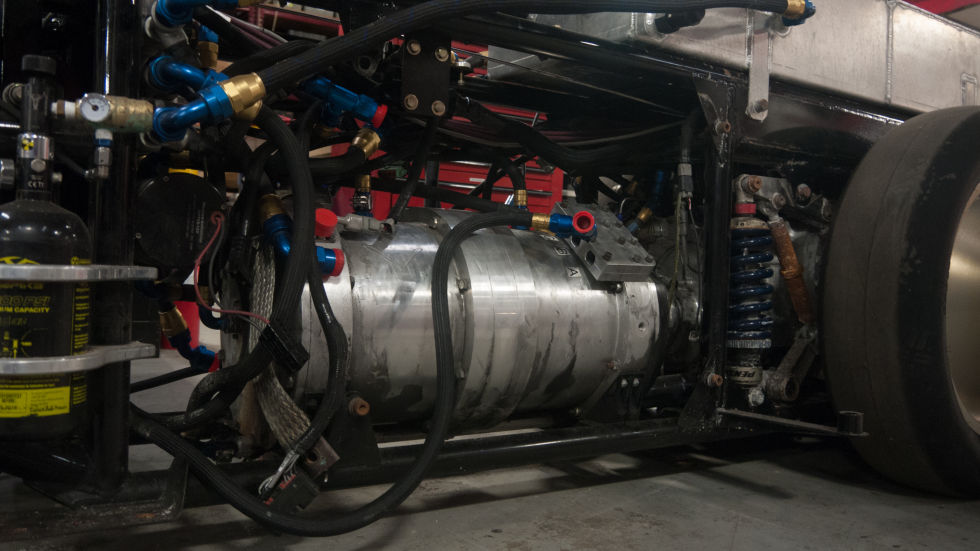
car without a carbon body One of two engines with a capacity of 1,500 horsepower
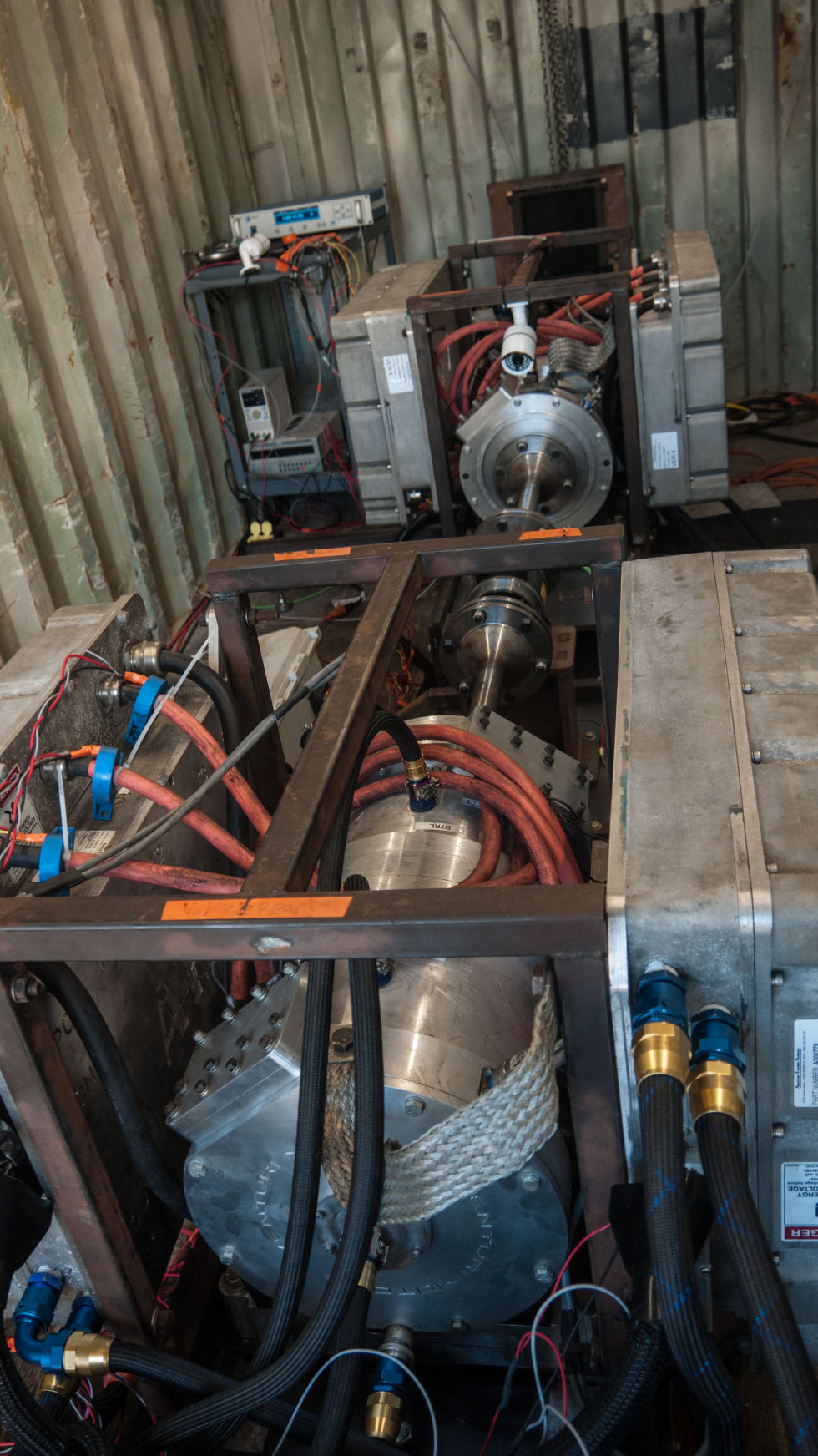
Engine test bench
Each of the axles has its own motor. The student team continues to develop the powertrain, especially the inverter-controller, to achieve a capacity of 3,000 horsepower.
Team leader David Cook notes that there are enough technologies to create motors. Power supplies and cooling systems are important. The cooling system in VBB-3 is close to closed. The water tank is filled with ice, the oil passes through the motors, and before the race, the motors and inverters are cooled to about zero Celsius. Only 60 seconds are needed for the temperature to rise to the required start.
Two-speed gearboxes were specifically made in the UK by Hewland. For braking, composite disc brakes from Embraer-145 and a parachute are used.
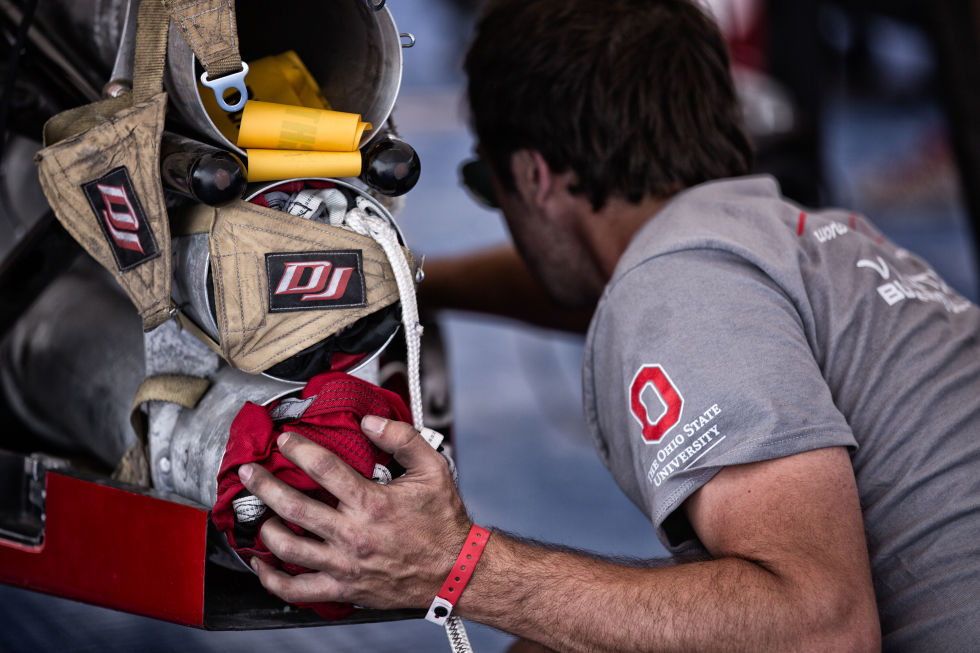
Electric vehicle helps to slow down the parachute
The carbon fiber body was also difficult to make, because the length of the parts was twelve meters. Great equipment was needed. The corps added an extra five hundred thousand - a million dollars to the budget.
In 2015, on the Salt Lake Bonneville, the pilot Roger Shawer accelerated to 463 kilometers per hour, and later to 482 kilometers per hour. The races ended with the crimson-colored coolant flowing to the ground: the reservoir with the refrigerant burst.

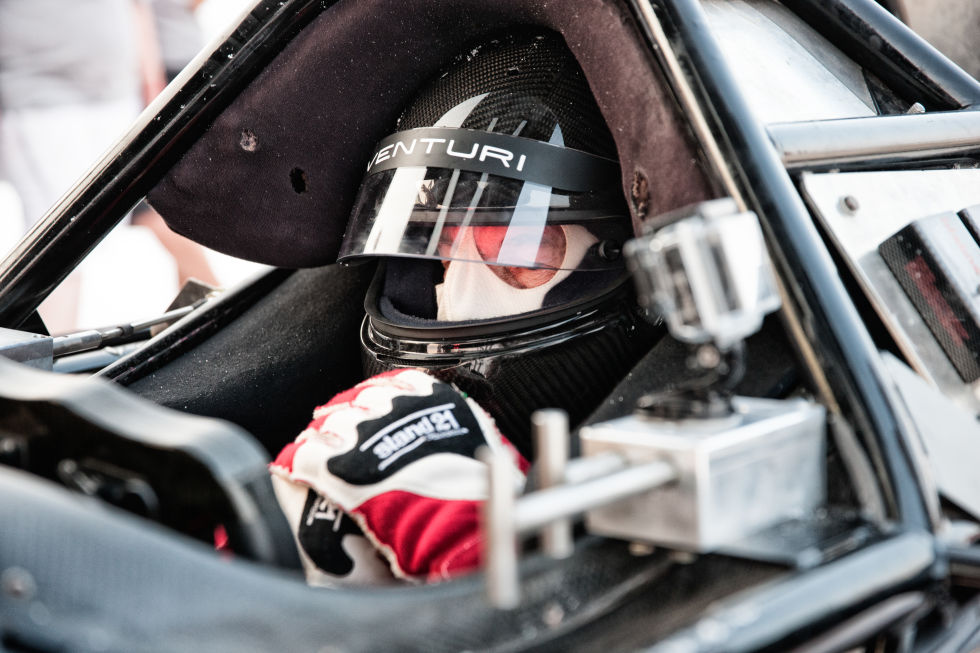
VBB-3 pilot - Roger Schoer
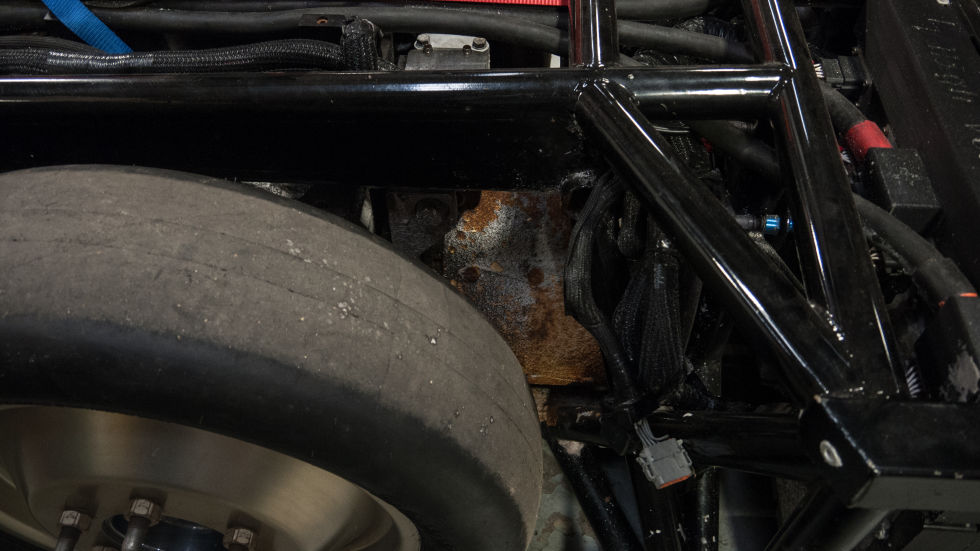
Corrosion on VBB-3 after a run on Salt Lake in 2015
It should be said that for the first time a speed record above 100 km / h was shown by the La Jamais Contente electric car, which was driven by the Belgian Camille Zhenatzi. Engine power was 40 horsepower.
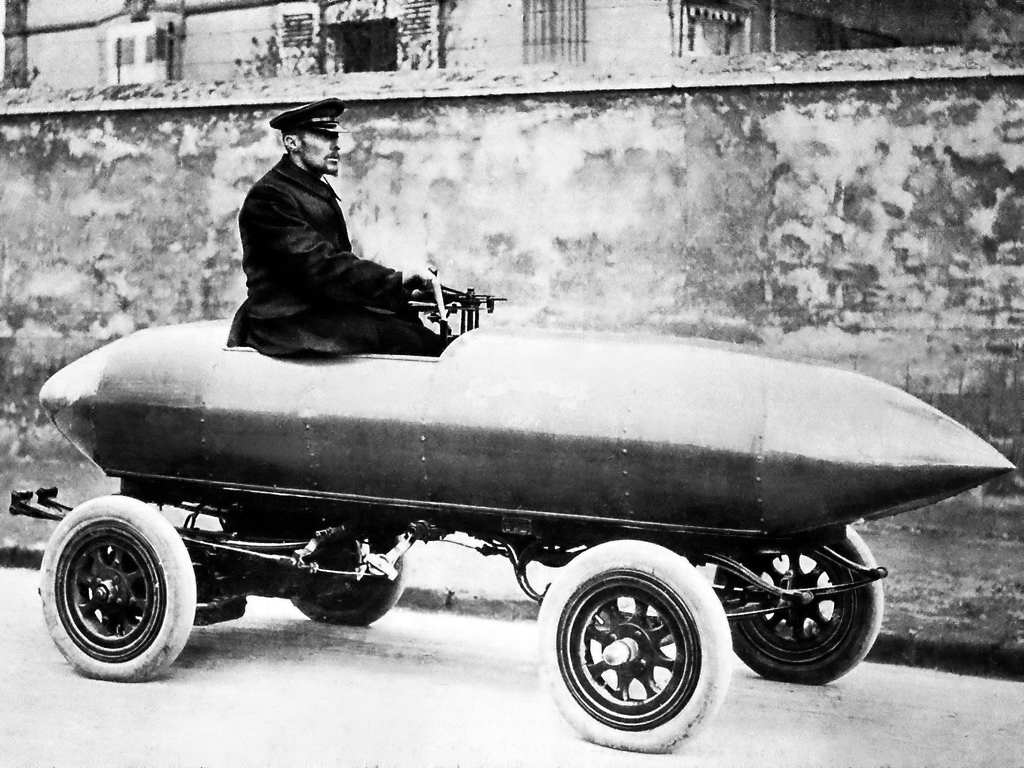
La Jamais Contente electric
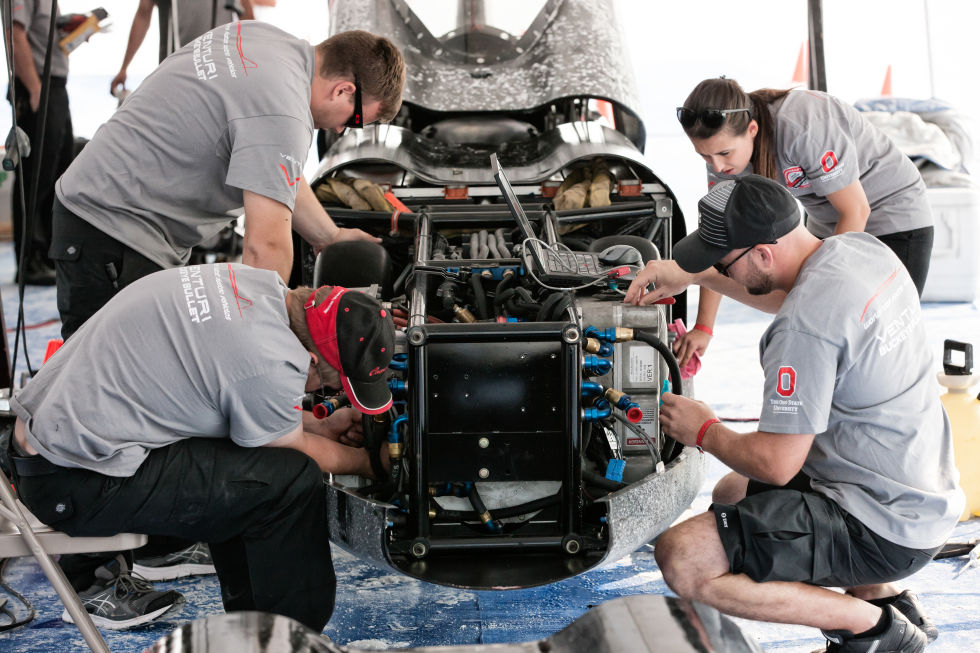
car The whole team, except the driver, was recruited from Ohio State University
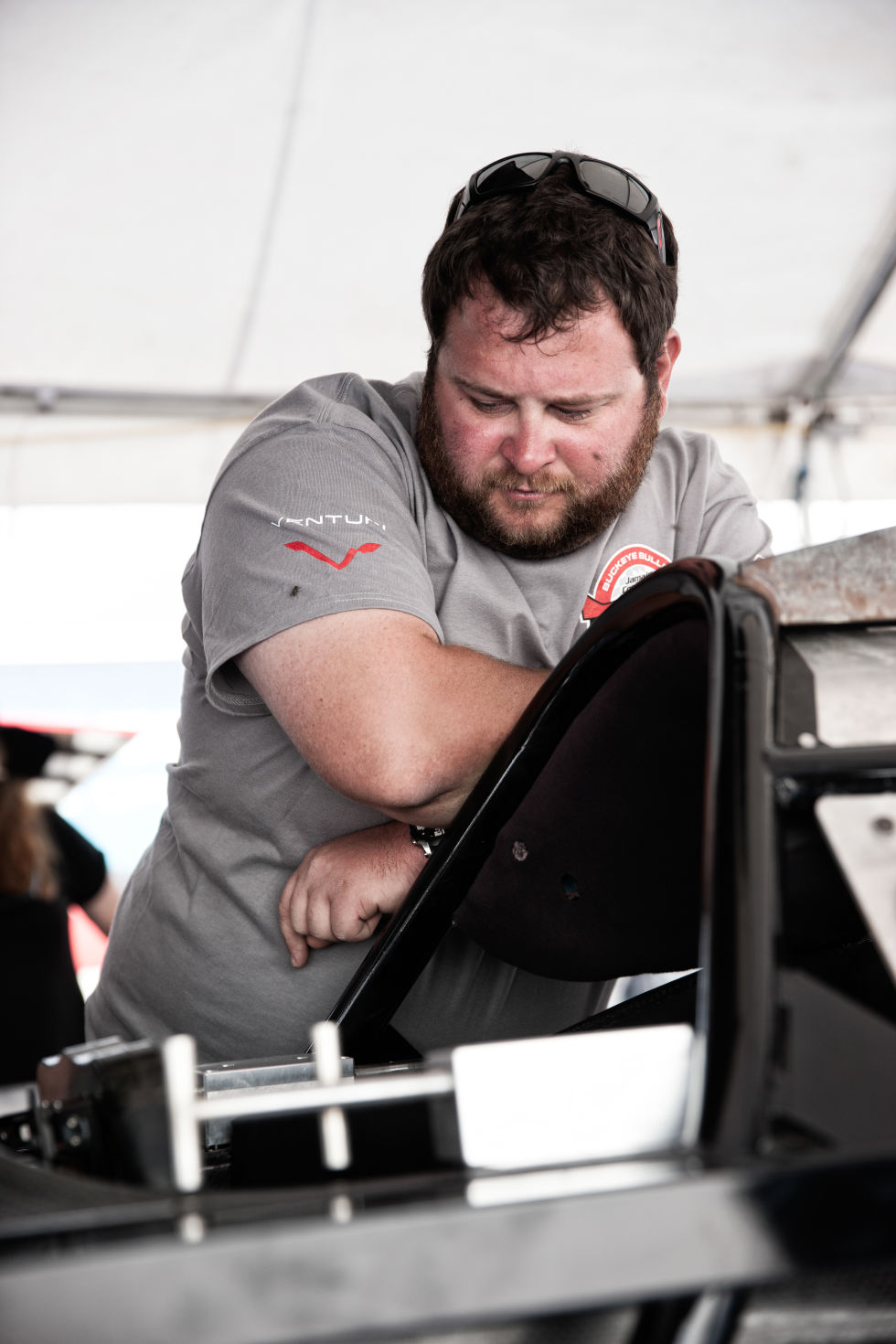
Team leader - David Cooke VBB-3
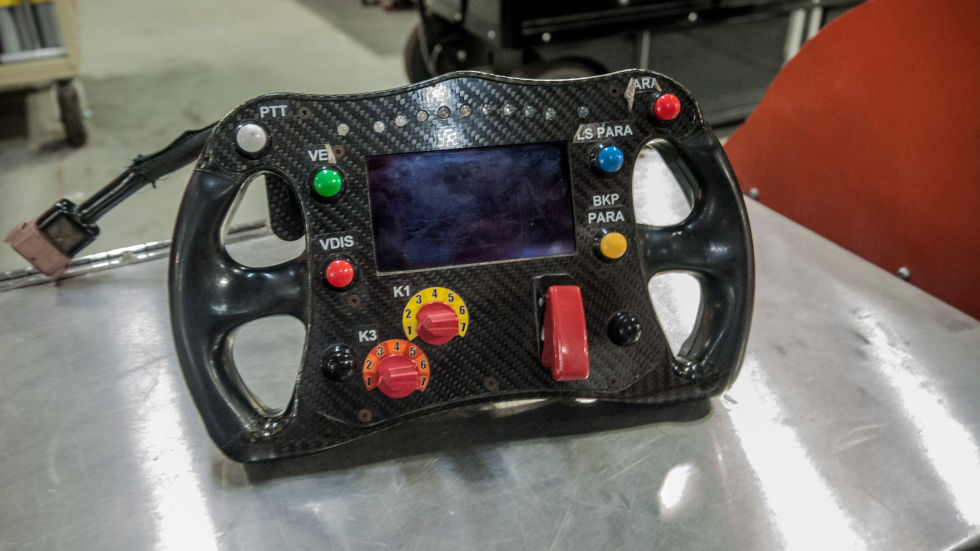
steering wheel
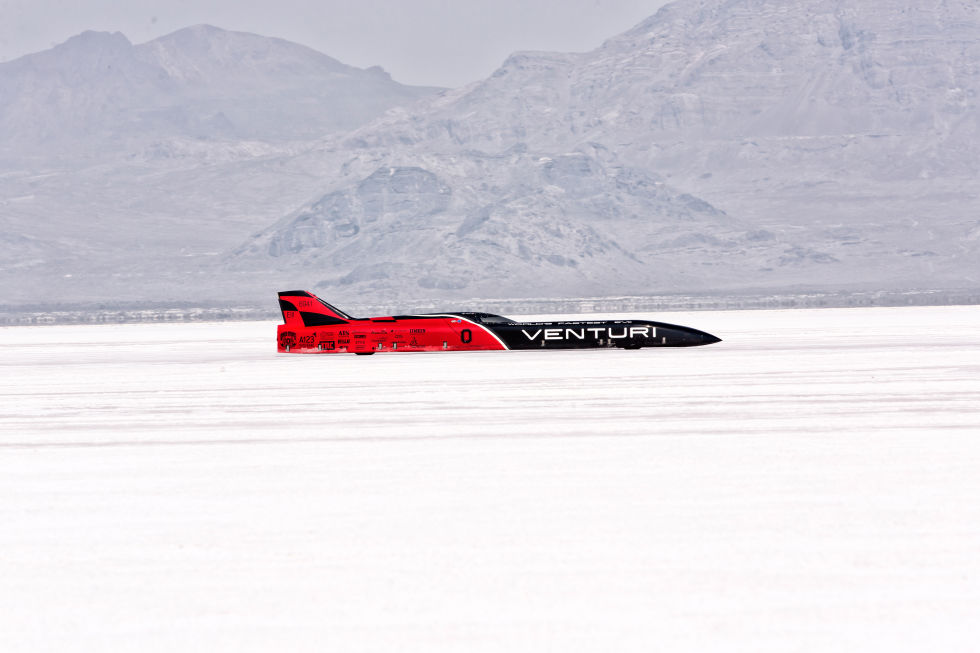
on Bonneville Salt Lake
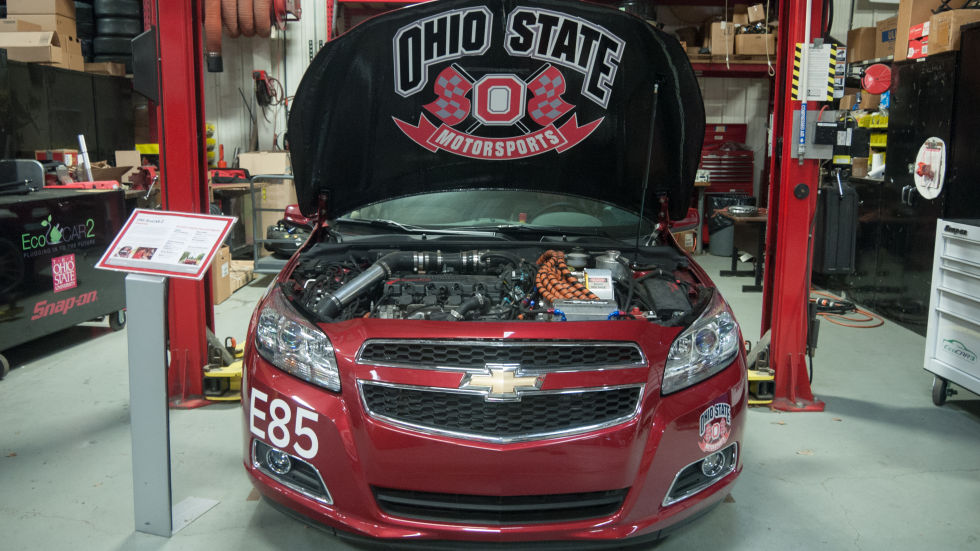
Another project from students - they won the 2014 EcoCAR prize by making hybrid car Chevrolet Malibu
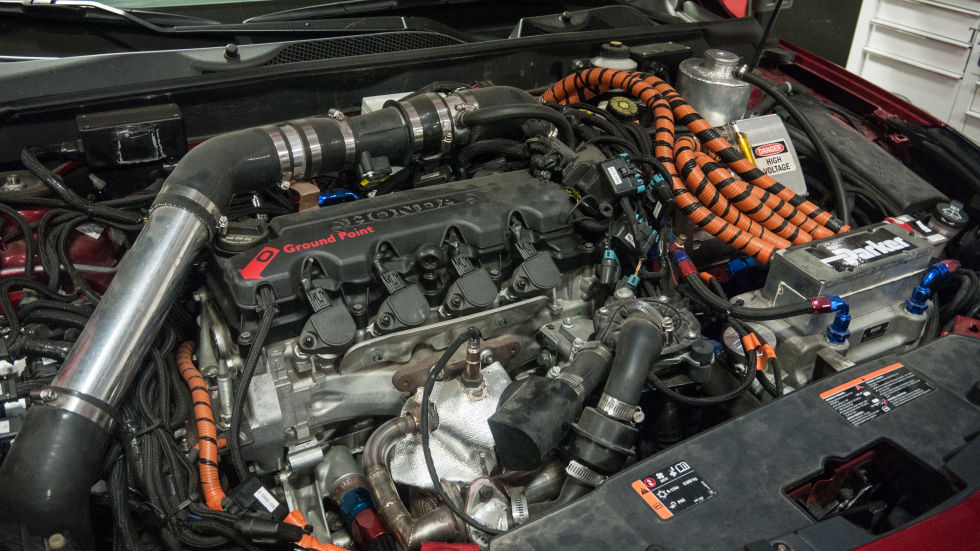
Under the hood Malibu - Honda engine instead of GM
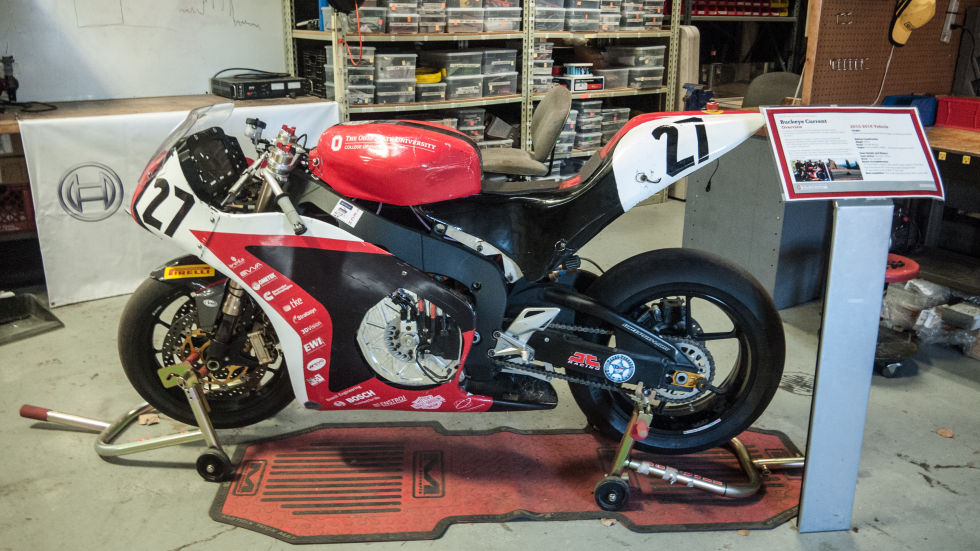
Students also work with two-wheeled vehicles

equipped the Venturi Buckeye Bullet-3 with two electric motors each with a capacity of 1,500 horsepower (1,119 kW). Motors get energy from eight large lithium-ion batteries that were previously installed on the Dallara IR03 IndyCar.

An electric

car without a carbon body One of two engines with a capacity of 1,500 horsepower

Engine test bench
Each of the axles has its own motor. The student team continues to develop the powertrain, especially the inverter-controller, to achieve a capacity of 3,000 horsepower.
Team leader David Cook notes that there are enough technologies to create motors. Power supplies and cooling systems are important. The cooling system in VBB-3 is close to closed. The water tank is filled with ice, the oil passes through the motors, and before the race, the motors and inverters are cooled to about zero Celsius. Only 60 seconds are needed for the temperature to rise to the required start.
Two-speed gearboxes were specifically made in the UK by Hewland. For braking, composite disc brakes from Embraer-145 and a parachute are used.

Electric vehicle helps to slow down the parachute
The carbon fiber body was also difficult to make, because the length of the parts was twelve meters. Great equipment was needed. The corps added an extra five hundred thousand - a million dollars to the budget.
In 2015, on the Salt Lake Bonneville, the pilot Roger Shawer accelerated to 463 kilometers per hour, and later to 482 kilometers per hour. The races ended with the crimson-colored coolant flowing to the ground: the reservoir with the refrigerant burst.


VBB-3 pilot - Roger Schoer

Corrosion on VBB-3 after a run on Salt Lake in 2015
It should be said that for the first time a speed record above 100 km / h was shown by the La Jamais Contente electric car, which was driven by the Belgian Camille Zhenatzi. Engine power was 40 horsepower.

La Jamais Contente electric

car The whole team, except the driver, was recruited from Ohio State University

Team leader - David Cooke VBB-3

steering wheel

on Bonneville Salt Lake

Another project from students - they won the 2014 EcoCAR prize by making hybrid car Chevrolet Malibu

Under the hood Malibu - Honda engine instead of GM

Students also work with two-wheeled vehicles
